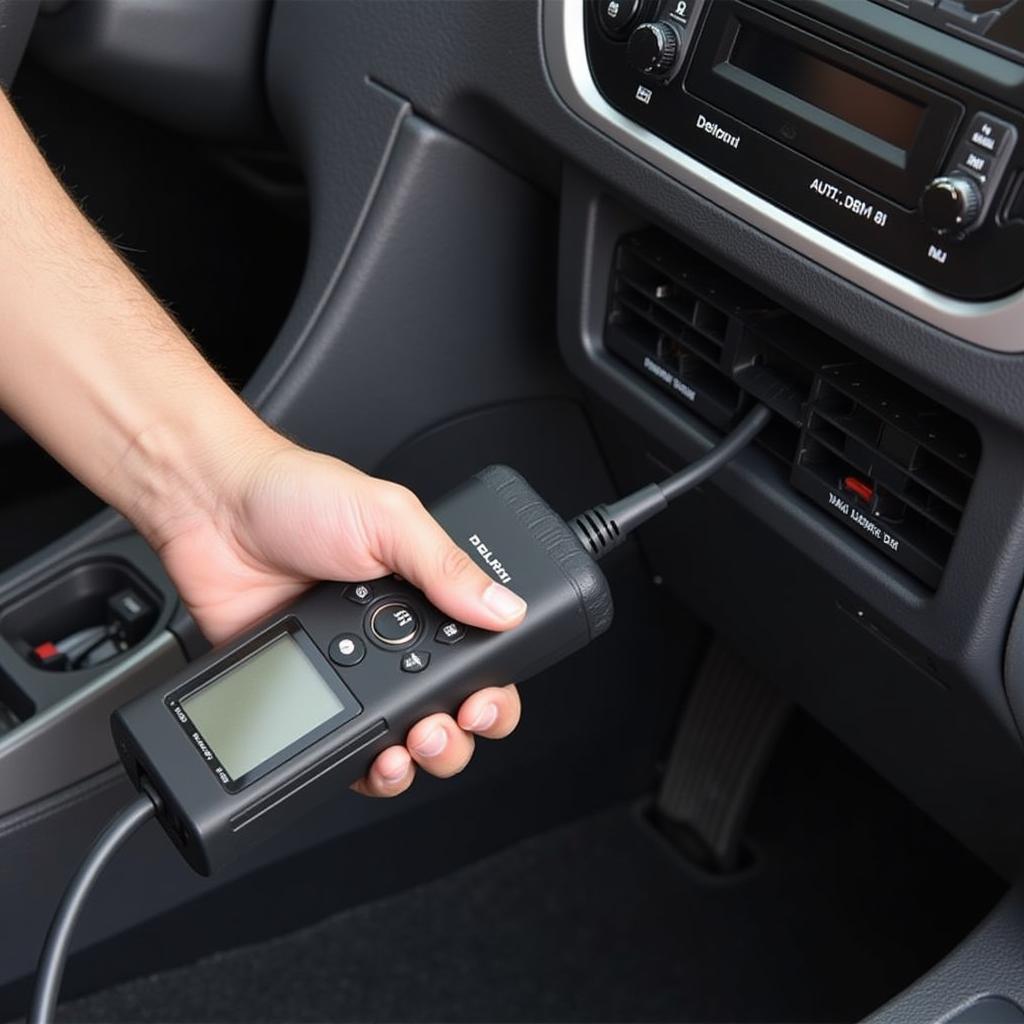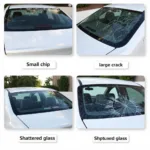Delphi diagnostic tools are popular among mechanics for their versatility and functionality. However, sometimes you might encounter the frustrating issue of your Delphi diagnostic not working or not reading your car’s ECM (Engine Control Module). This can bring your diagnostic process to a screeching halt, leaving you wondering what went wrong. This article will delve into the common causes behind this problem and provide practical solutions to get your Delphi diagnostic tool back up and running.
Common Reasons for Delphi Diagnostic Not Working
Several factors can contribute to your Delphi diagnostic tool not communicating with the car’s ECM. Identifying the root cause is crucial for effective troubleshooting. Some of the most common issues include:
- Communication Issues: A faulty or loose connection between the diagnostic tool and the vehicle’s OBD-II port is a frequent culprit. This could be due to a damaged cable, a bent pin in the connector, or simply a poor connection.
- Software Problems: Outdated or corrupted software on your Delphi diagnostic tool can interfere with its ability to communicate effectively. Regular software updates are crucial for optimal performance.
- ECM Problems: While less common, a malfunctioning ECM can prevent the diagnostic tool from reading data. This could be due to internal hardware issues, corrupted firmware, or other problems within the ECM itself.
- Vehicle Compatibility: Ensure your Delphi diagnostic tool is compatible with the make, model, and year of the vehicle you’re working on. Some older vehicles may require specific adapters or software versions.
- Power Supply Problems: The diagnostic tool and the vehicle’s ECM both require a stable power supply. Check the vehicle’s battery and ensure the diagnostic tool is properly powered.
Troubleshooting Steps for “Delphi Diagnostic Not Reading Car ECM”
When your Delphi diagnostic is not reading the car ECM, follow these steps to diagnose and resolve the problem:
- Check the Basics: Start by verifying the connection between the diagnostic tool and the OBD-II port. Ensure the cable is securely plugged in at both ends and inspect for any visible damage to the cable or connector.
- Verify Power Supply: Confirm that the vehicle’s ignition is turned on. Check the vehicle’s battery voltage to ensure it’s within the acceptable range. If the diagnostic tool has a separate power supply, verify that it’s functioning correctly.
- Software Update: Update the software on your Delphi diagnostic tool to the latest version. This can often resolve compatibility issues and fix software bugs that may be hindering communication.
- Consult Compatibility Charts: Double-check that your Delphi diagnostic tool is compatible with the specific vehicle you’re working on. Consult the manufacturer’s compatibility charts to confirm compatibility and any necessary adapters.
- Test on Another Vehicle: If possible, try connecting your Delphi diagnostic tool to another vehicle to rule out a problem with the tool itself. If the tool works on another vehicle, the issue likely lies with the original vehicle’s ECM or related systems.
Advanced Troubleshooting and Expert Advice
If the basic troubleshooting steps don’t resolve the issue, further investigation may be needed.
Checking for Communication Errors
Using a multimeter, you can check for communication signals between the diagnostic tool and the ECM. This requires some technical knowledge and should be performed with caution.
“When dealing with advanced diagnostics, remember that safety comes first. Always disconnect the battery before working on any electrical components in the vehicle,” advises John Smith, Senior Automotive Diagnostic Technician at Advanced Auto Solutions.
Inspecting the ECM
In some cases, the ECM itself may be faulty. A visual inspection of the ECM for any signs of damage, corrosion, or loose connections can be helpful.
Conclusion
Troubleshooting a Delphi diagnostic tool that’s not reading the car’s ECM requires a systematic approach. By following these steps and understanding the potential causes, you can often resolve the issue and get back to diagnosing your vehicle efficiently. If the problem persists after attempting these troubleshooting steps, consulting a qualified automotive technician is recommended. Remember, a properly functioning diagnostic tool is essential for accurate diagnosis and repair.
FAQ
- Why is my Delphi diagnostic tool not powering on?
- How do I update the software on my Delphi diagnostic tool?
- What if my Delphi tool is not compatible with my car?
- Can I damage my car’s ECM by using a diagnostic tool?
- Where can I find support for my Delphi diagnostic tool?
- How can I tell if my car’s OBD-II port is faulty?
- What is the difference between a Delphi diagnostic tool and other scan tools?
Common Scenarios
- Scenario 1: The diagnostic tool powers on, but it doesn’t communicate with the car.
- Scenario 2: The diagnostic tool displays an error message related to communication.
- Scenario 3: The diagnostic tool connects, but it doesn’t display any data from the ECM.
Related Articles and Resources
- Understanding OBD-II Codes
- Common Car Diagnostic Problems
- Choosing the Right Diagnostic Tool
Need help with your Delphi Diagnostic? Contact us via WhatsApp: +1(641)206-8880, Email: [email protected]. Our 24/7 customer support team is ready to assist you.


